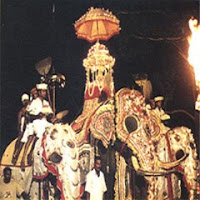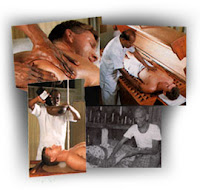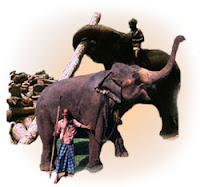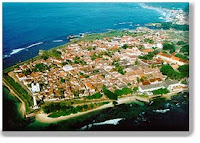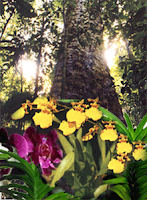
The gems of Sri Lanka are woven in to his history. The Mahavansa, the ancient chronicle of Sri Lanka too mentioned about gems and jewellery. Indeed, the lord Buddha himself is sad to have had to come to Sri Lanka from India to settle a dispute between two kings, Chulodara and Mahodara, over a throne of gems.
King Solomon is reported to have had gems brought from this island to win the heart of beautiful Queens. The great traveler, Marco Polo, Was said to have been so awe struck by a priceless ruby in the possession of the king of Sri Lanka that he recorded it as been “ span in length, with out a flaw, brilliant beyond compare.
Sri Lanka became known as Ratna Deepa(The Island of Gems). Some of the rarest precious stones in the world are found in abundance in the reach earth under our feet and the hills above us. Among the Several world famous gems Sri Lanka’s blue sapphire Weighing 466 carats.the largest known sapphire in the world. Weighing in at 19kg was also discovered here. Other famous gems include the Blue giant of the Orient, Weighing nearly 500 carats and the bluebell of Asia, which weighs in at 400 carats. The renowned Sri Lankan Star sapphire is on permanent display at the Museum of Natural History in New York, but due to an oversight, the stone has been called the star of India.
Throughout history Sri Lanka’s gems and jewellery have adorned the crown jewels of many a royal family. A gem- a 105 carat cat’s eye- discovered in a paddy field in Sri Lanka, gained fame among the royalty of Britain and was Successively Admired by Edward VII, George V, Edward VIII and Queen Elizabeth.The process of mining for gems is begun at an auspicious time with a short religious ritual. The most common methods of mining are in pits and by tunneling. Surface gemming and dredging depends on the location and the type of deposits stones are normally found in a layer of coarse, pebbly material, which contains traces of clay and fine sand. This gravel containing gems is referred to as “illam” and is found just below the alluvial deposits.
The rarest gem in the world Alexandrite, is found in Sri Lanka.Gem pits are of two kinds.the shallow ones are well shaped and circular, whereas deep pits are rectangular. To prevent the walls of the pits from caving-in scaffoldings are made and the spaces filled with leaves. The water is then pumped out of the pit. If the “illam” vein runs horizontally, tunneling has to be resorted to.Another method of collecting illam is to place wooden poles across the river bed and standing on a pole with a long stick, a person drags the gravelly sand to wards him. This is then collected in buckets. Either way the gravel is then washed in large circular wicker buckets by immersing them in water and rotating them. This enables the light, ordinary pebbles and sediment to escape, leaving the heavier pebbles behind. Then the basket are held against the sunlight and the sorting is carried out.
Each illam brings forth a variety of stones. The principal source of Alexandeite, the rarest gem in the world is Sri Lanka it was first pound in the Urals in 1830 and is named after czar Alexander II who come of age on the day it was found. This stone shines green in natural light but turns raspberry red in artificial light.The cat’s eye is another stone which is considered valuable and rare. It derives its name from fact that a silvery line runs across its greenish-gray surface, giving it a remarkable resemblance to the eye of a cat. The rarest type is the black cat’s eye.
Sri Lanka can boast of having 17 varieties of precious and semiprecious stone. The most notable are:- Blue Sapphire:A blue stone with a silvery streak, said to protect its Wearer.
Alexandrite: the rarest and possibly the most beautiful of stones.
Stur Ruby: its colour ranges from pale pink to red with a sulky streak.
Yellow Sapphire:poetically known as the “pollen of flowers” because of its soft yellow colouring.
Star Sapphire: a rich blue star stone with snowy streaks, said to bring good luck.
Amethyst: a rich purple stone.
Garnet: A deep purplish-red stone, unique for its richness of colour.
Moonstone: a pale blue stone with silvery light only found in Sri Lanka and said to possess the power of tranquilizing its wearer.
The State Gem Corporation
The State Gem Corporation plays a vital role in the development of the gem industry of the island. It annually holds courses in gem identification and lapidary training.
Among the basic operations of the corporations are the testing of gems for genuineness, Certification and assaying of jewelry to determine the gold content or cartage of the items. The spectrum of activity of this institution ranges from the mining stage, through cutting and polishing to selling the finished product, which of course includes exports.
It is situated in Colombo, the exchange provides all facilities related to the gem industry, under one roof. It is the 21st Exchange of its kind in the world and houses stalls for retail and wholesale business customs office, and a museum…












